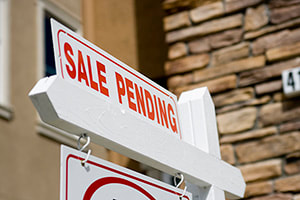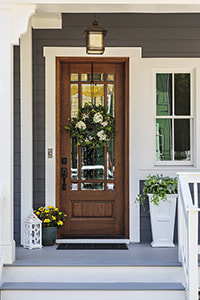 For the 107th month in a row, national home prices climbed year over year, according to the National Association of Realtors (NAR). Every sales region in the country posted price increases, with the median existing-home price rising 14.1% from a year earlier. The rising sales prices, however, did little to deter buyers, as every sales region posted year-over-year double-digit increases in existing-home sales. When comparing month-over-month sales activity, rates varied from region to region. The demand for homes is reflected in the rate at which homes are remaining on the market. In January, the average home sold in just 21 days, unchanged from December but down significantly from the 43 days a home remained available just a year ago. Of all the homes sold in January 2021, 71% were sold in under one month. Buyers Compete for Scarce Listings The high demand for homes is reflected in the ongoing housing shortage. At the end of January, there were just 1.04 million homes available for sale, down 25.7% year over year. NAR has never recorded a decline in inventory so severe. At the current sales pace, the stock of houses would supply the market for only 1.9 months, unchanged from December but down from the 3.1-month supply recorded a year ago. According to Lawrence Yun, chief economist for NAR, "Home sales continued to ascend in the first month of the year, as buyers quickly snatched up virtually every new listing coming on the market." He adds that sales could have been as much as 20% higher if there was more inventory on the market and buyers had more choices. Housing Remains a Bright Spot in U.S. Economy Unlike other parts of the U.S. economy, the housing market seems to be immune to the effects of COVID-19. In every tracked metro area, home prices increased during 2020's fourth quarter. "Home sales are continuing to play a part in propping up the economy," said Yun. "With additional stimulus likely to pass and several vaccines now available, the housing outlook looks solid for this year." In addition, as employment rates continue to improve, homebuying is expected to increase in the coming months. According to Yun, existing-home sales will climb to a minimum of 6.5 million in 2021. Though he predicts rising mortgage rates due to budget deficits and climbing inflation, Yun believes sales will remain strong. First-Time Buyers See Potential First-time buyers accounted for 33% of all purchases in January, up from 31% a month ago and 32% a year ago. According to the NAR "2020 Profile of Home Buyers and Sellers," first-time buyers made up 31% of the buying public in 2020. Individual investors and second-home buyers—a group who account for most all-cash sales—were responsible for 15% of all home purchases, up from 14% in December but down from 17% in January 2020. Of all sales transactions, 19% were all cash, unchanged from a month ago but down from 21% a year ago. Meanwhile, distressed sales—including foreclosures and short sales—accounted for fewer sales, representing just 1% of all transactions in January. This was unchanged from a month ago but down 2% from January 2020. Regional Breakdown Nationwide, January's existing-home sales climbed to a seasonally adjusted annual rate of 6.69 million. This was a 0.6% increase month over month and a 23.7% increase year over year. Northeast - Existing-home sales annual rate of 870,000; a decrease of 2.2% from December 2020 but an increase of 24.3% from January 2020. The median sales price, $361,400, increased 15.8% from January 2020. Midwest - Existing-home sales annual rate of 1.57 million; an increase of 1.9% from December 2020 and 22.7% from January 2020. The median sales price, $227,800, increased 14.7% from January 2020. South - Existing-home sales annual rate of 2.94 million; an increase of 3.2% from December 2020 and 25.1% from January 2020. The median sales price, $263,300, increased 14.6% from January 2020. West - Existing-home sales annual rate of 1.31 million; a decrease of 4.4% from December 2020 but an increase of 21.3% from January 2020. The median sales price, $461,800, increased 16.1% from January 2020.
0 Comments
 A typical step in nearly every home-buying process is a home inspection. This is when a certified home inspector examines the house's structure and systems looking for issues such as a cracked foundation, significant termite damage, or improper wiring. The inspection usually occurs after a purchase offer has been accepted and can be a point of renegotiation should problems turn up. When you're in a seller's market, competition among buyers can lead to bidding wars, causing some buyers to waive contract contingencies such as the home inspection. Redfin, a nationwide real estate listings website, revealed that by midyear 2020, 1 in 5 of the accepted offers handled by their agents included a waiver of the home inspection. But is it a good idea to skip a home inspection? Waiving a Home Inspection Contingency Is Risky It's one thing to have to fix a faulty furnace or replace a dishwasher, but it's another thing entirely if a home has major structural damage. Any structural repairs are costly and sometimes even impossible to fix. Your mortgage provider might even insist on a home inspection before approving your loan depending on when the home was built and where it's located. There are Other Ways to Boost Your Bid When you fall in love with a house and would do anything to get it, you might be tempted to forgo the safeguard a home inspection provides. Consider these alternative options for making your bid stand out: You could remove the appraisal contingency, meaning you'd have to bring more cash to the table if the home doesn't appraise for an amount that suits your mortgage lender. You could be flexible with the closing date, allowing the seller to set the timeline for moving. You could also offer to pay the seller's closings costs. These solutions all mean coming up with more cash, but eliminating the inspection could also wind up being costly. Protect Yourself as Best You Can If you're in an extremely competitive market with multiple-bid situations that might require waiving your contingencies, you could have a contractor or inspector tour homes with you. They might notice problems you don't, and if the problems are big enough, you'll know to avoid the home entirely. Home warranties can also be purchased for around $400 for one year and can be extended for years with additional premiums. To protect yourself further, search public records to see if any permits have been issued for major work on the property, as any large jobs require permits. In hot markets, bidding wars among home buyers are common. It might be tempting to waive your home inspection contingency to make your bid stand out. Consider carefully, though, before taking such a risk and try to protect yourself against any possible ramifications. |
AuthorA variety of pertinent real estate topics and tips from various authors and contributors. Archives
December 2024
Categorieshow much home can i afford?*
|


